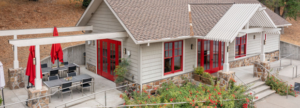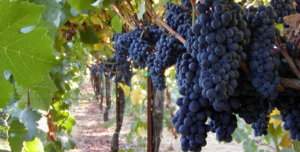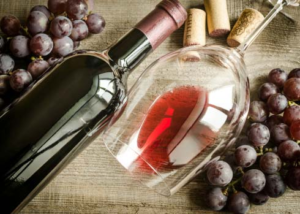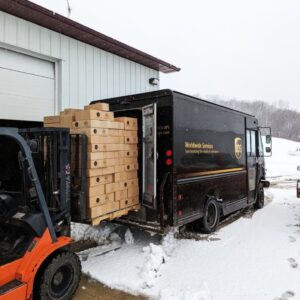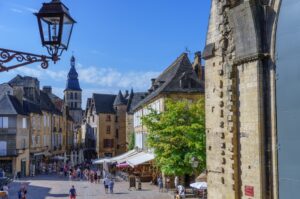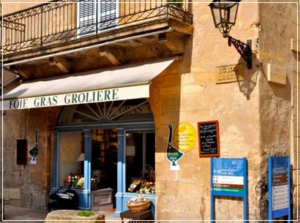We love driving down Westside Road in the Russian River Valley. Healdsburg is just behind us; great Pinot Noir and Chardonnay lie ahead. Westside is a well-tended country road, with wineries on your right side, heading south, and occasional glimpses of the valley floor to your left. And there on your right you will find Bacigalupi Vineyards (https://bacigalupivineyards.com).
The Bacigalupi tasting room. Photo courtesy of the winery.
Bacigalupi is a family vineyard, which means a lot in these days, when “family” often means “We made a lot of money doing something else, and bought ourselves a vineyard”. The Bacigalupis have been growing grapes on this property since 1956, with the first plantings of Pinot Noir and Chardonnay in 1964, possibly the first Pinot Noir in Russian River. They must have done some things right, because their Chardonnay was in the blend that won the Judgement of Paris in 1976, included amongst Chateau Montelena’s grapes.
Bacigalupi’s Pinot Noir. Photo courtesy of the winery.
In fact, you may have already tasted some of Bacigalupi’s production. They sell more of their grapes than they use for bottling under their own label. Williams Seylem and Gary Farrell are among their customers, who gladly announce the vineyard they source from. We don’t know if this is true (and the family won’t tell) but it’s only reasonable to expect that they hold back their best grapes for their own wine.
To this day, Bacigalupi is truly family-owned. Charles, the founder, has passed away, but his wife Helen is still with us. John and Pam, son and daughter-in-law, run it and Katey and Nicole are in management positions. We have found that if you stop by for a tasting, a family member is likely to be pouring your wine. And in keeping with that of-the-soil tradition, the winery is simple, more of a farmhouse than a tasting room. It’s far enough off Westside Road that it feels rather isolated, as though it were the only farm property for miles, instead of one of the many Russian River wineries.
To this day, Bacigalupi has stuck with what they do well: Pinot Noir and Chardonnay. In fact, they have kept the 2½ acre Paris Tasting Vineyard. Wine from this vineyard is available (though hard to find) under the name Renouveau. Our tastes run more to their Pinot Noirs, from several of Bacigalupi’s vineyards. We find them representative of Russian River Pinot Noirs, which is saying quite a lot. If you want to know what good Russian River Pinot Noir tastes like, try theirs. They are full-bodied, but not like some of the bruisers from Santa Lucia Highlands, nor thin and acidic as you find at other Russian River vineyards.
While the wines are modern and bright, the experience of a visit to Bacigalupi is homey and laid-back. It’s as though you are being invited into the Bacigalupis’ home, which after a fashion you are. The wines are well worth tasting but they’re not the only reason to stop there. You get to feel a part of a culture that is sadly dying out, of honest people making quality wines because that’s what they do. More, it’s who they are. If you’re a serious wine taster, you’ll appreciate the people as well as the wine.
